#North Amherst
Explore tagged Tumblr posts
Text

In this view from the Mill Street bridge in North Amherst, swimmers sit on the dam at Puffer’s Pond in 2016. The town has applied for a state grant that would help pay for development of an improvement plan at the pond, including the dam and dike.
Amherst requests state grant to develop Puffer’s Pond improvement plan
"If the money is awarded later this year, engineers will be hired to examine the pond and propose fixes. They will take readings on the depth of the water in the pond, get an understanding of what’s on the bottom of the pond, and take depth of sediment cores and examine what’s in the sediment.
Such a project could help the town to decide whether to undertake dredging of the pond, last done in 1986, when 100,000 cubic yards of material were removed.
“It does move the needle on dredging,” Ziomek said. “From that information we should be able to extrapolate the volume of sediment that needs to be removed from the pond.”
READ MORE https://www.gazettenet.com/Amherst-seeking-support-from-state-program-for-Puffers-Pond-dam-and-dike-repairs-54694735
0 notes
Text
Feliciano Towing: Your Trustworthy Partner for All Towing Needs in Northeastern Ohio. #towing #flatbed #towtruck #fueldelivery #winchout #lockout #webuyjunkcar #elyria #northeastohio #OlmstedFall #LongDistanceTowing #lowestprice #Avon #hauling #felicianotowing #avonlake #westlake #amherst #oberlin #lagrange #columbiastation #northridgeville #bayvillage #palma @todos #viral #facebookreel
#roadsideassistance#towtruck#towing#tirechange#lockout#batteryjump#towing24/7#westlake#felicianotowing#elyria#north east ohio#northridge#north Olmsted#avon#vintage avon#amherst#Oberlin#columbia station#bay village#sheffield#Sheffield village#lorain county#Lorain#Eaton#life tow#towing company#towing quote#towing life#tow services#tow truck drivers
2 notes
·
View notes
Text
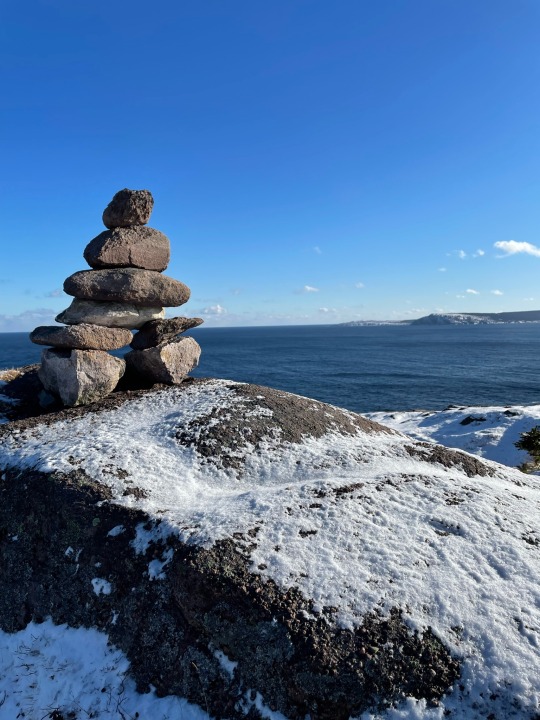

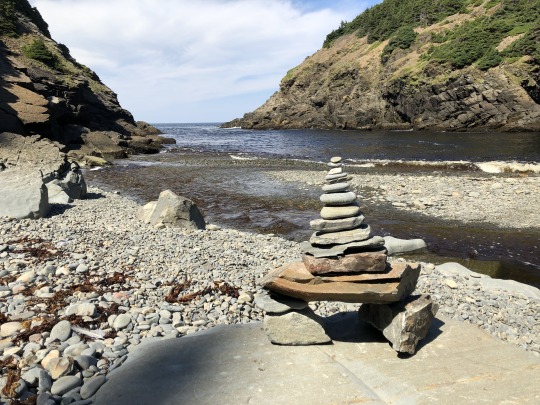


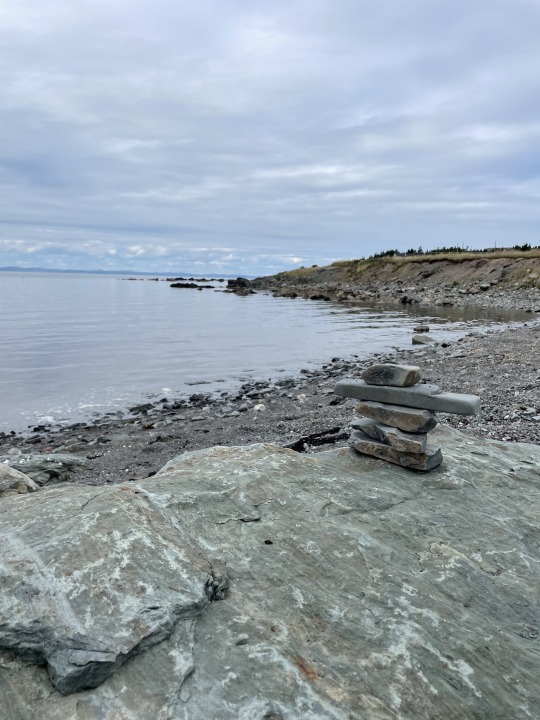
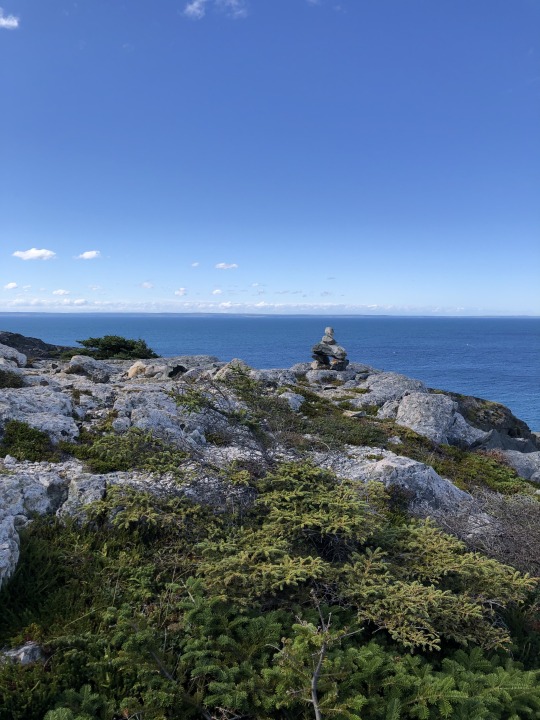
Inukshuks of the Avalon.
I love finding these. Might make one myself on my next hike.
#Newfoundland#Canada#Inukshuk#rocks#east coast#East Coast Trail#Signal Hill#St. John's#YYT#rock formation#Inuit culture#Canadian culture#the great white north#Sugarloaf Path#Deadman's Bay Path#Fort Amherst#Biscan Path#Ladies Lookout#Islington#Avalon penninsula
8 notes
·
View notes
Text
who was going to tell me that Richie from the bear's irl parents run the music school in my hometown.... literally what the fuck
#I knew he was from Amherst which is about an hour north but WHAT#just had to read that on wikipedia and have my jaw drop
0 notes
Text
The State Birds Initiative: Massachusetts (#6)

Whoa, it's December already? Wow! Been a while since I made one of these, but I honestly needed the break I think. So, uh...where were we? Ah, right.
Welcome to the sixth official poll of the State Birds Initiative! Before the poll, though, one thing real quick, and I cannot emphasize this enough! Read the post below before voting in the poll! It's not a requirement, but it is a real firm suggestion, especially important if you're lacking context about the birds being presented as the new (or old) State Bird of the Bay State, Massachusetts. This is to be fully informed as to why these are being presented, and to make your choices appropriately. Lastly, some of these birds, you will notice, *may *go against some of the rules listed in the introduction post. All is explained after the jump where the explanations are, I promise you that. With that...OK! Here's the poll!
Welcome to the sixth official poll of the State Birds Initiative! Before the poll, though, one thing real quick, and I cannot emphasize this enough! Read the post below before voting in the poll! It's not a requirement, but it is a real firm suggestion, especially important if you're lacking context about the birds being presented as the new (or old) State Bird of the Bay State, Massachusetts. This is to be fully informed as to why these are being presented, and to make your choices appropriately. Lastly, some of these birds, you will notice, may go against some of the rules listed in the introduction post. All is explained after the jump where the explanations are, I promise you that. With that...OK! Here's the poll!

Massachusetts, baby! I've had to travel away from the Bay State in the past week for a conference, but I'm excited to get back to this surprisingly great state. I say surprisingly because Massachusetts' reputation isn't a greatest for those outside of it, but living in it has definitely changed my mind for a number of reasons! That said, the time has come to talk about it a bit. The sixth smallest state in the union, Massachusetts is home to a number of prominent cities, both historically and contemporaneously. There is of course, Boston, the capital and largest city seen above via the big-ass CITGO sign. And while that's the city people equate with the entire state, let's not forget Worcester, Springfield, Cambridge, Lowell, Plymouth, Salem, Amherst, Natick, Cape Cod, etc., etc., etc. There's a whole-ass pile of classic New England cities in this small state, as well as a bevy of habitats and natural spaces.
So, to get into it a bit, Massachusetts is smack-dab in the New England temperate forests, with the highlands dominating the western portion of the state, and a flat lowland coastal region in the eastern half. Forests are temperate mixed, which contributes to the legendary falls that we see in New England. The coastal regions, meanwhile, are glacial in origin, covered in wetlands towards the center of the state, and beaches on the shores. Also of note are the various coastal marshes throughout the state, which serve as their own predominant habitats. Using the BioMap2 project as a framework, let's talk a little bit about these habitats.
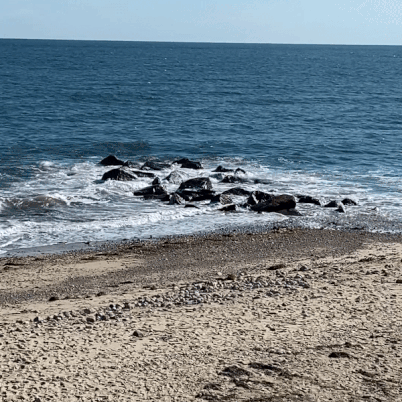
Massachusetts, of course, sits on the Atlantic Ocean, which certainly isn't a first for this list, but is vitally important as we go further north into New England. In the case of Massachusetts, we're looking at sandy beaches and dune habitats as prominent foraging and nesting areas for various shorebirds, which does make shorebirds a high likely focus for this list. Some of you probably know one of the most important birds we'll be looking at, but we'll get to that one, don't worry.
Alongside the beaches, estuaries are a prominent habitat along the shorelines. Places like Plum Island, in northern Massachusetts, or Belle Isle Marsh in the middle of Boston itself, personally come to mind. Massive saltmarshes that are vital stopover habitats for migrants, habitats for insects and endangered turtles, and coastal salt ponds and tidal marshes that house incredible biodiversity within them. There's a lot of focus coming to the coastlines, that's what I'm saying. All of these habitats and the species within them comprise about 41,000 acres of land, and about 75% of that is in danger from development and rising sea levels.
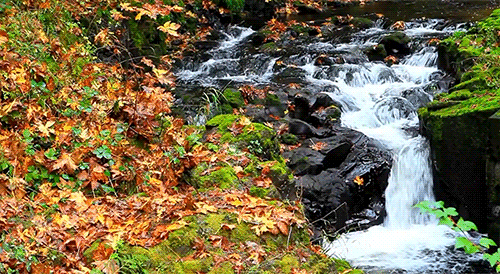
Now, I'm gonna skip over a bunch of other habitats here, especially freshwater wetlands and riparian habitats, because while these are extremely important, they won't be getting as much focus here. Now, we need to move on to the forests. I've talked about them before in Connecticut, New Jersey, and Pennsylvania, but we've got a very specific situation here in Mass. Here, because of the large number of people and settlements, fragmentation is a very prominent problem in the state. For the uninitiated, habitat fragmentation is basically what it sounds like: splitting up habitat by roads or other man-made corridors, breaking up populations of several animals, birds included. Doesn't sound like a big deal to animals that can fly, but birds don't like crossing corridors if they can help it, because it makes them vulnerable to predation (of adults and nests) and car strikes. So, forests of New England and Massachusetts are a habitat of needed focus. And while this will receive a slightly lesser focus, most likely, it's still a place we'll take a look at.
These three habitat types, wetland, coastal, and forest, are the most important in Massachusetts, as well as in New England (which, again, will change slightly as we head further north). But there's also the ever-important human element to consider, ESPECIALLY here.

While I said Boston doesn't define the entire state, and it doesn't, it's also the second most populated city on our list of states thus far, and happens to be one of the most important places in the country historically. Let's not forget, this is basically the seat of the American Revolution in many ways, so it's a pretty major part of our cultural identity as a country. And trust me, Boston is fully aware of that fact. I'm never one to dabble in stereotypes, but Bostonians are extremely proud to be Bostonians most of the time. It's a proud city, and that's understandable from a traditional point of view.
Plus, with Plymouth Rock 40 minutes to the south (and not worth the drive, from what I've heard), the textile-based seat of the American Industrial Revolution 40 minutes to the north (looking at you, Lowell), the site of the "shot heard round the world" 15 minutes away (Concord and Lexington, of course), the oldest American university 5 minutes away (Cambridge, of course), and the home of the legend of the American witch about an hour north (Salem, of course)...look, it's a central hub of the state, and it WILL not be ignored! So, with that said, grab some coffee from Dunks and some clam chowdah, let's settle in and check out some birds!
If anybody has a suggestion that I hadn't brought up here, send it my way! I will absolutely add another poll if there are entries I think could bear fruit. But, in the meantime, read on if you're interested in the possible choices for the State Bird of Massachusetts!
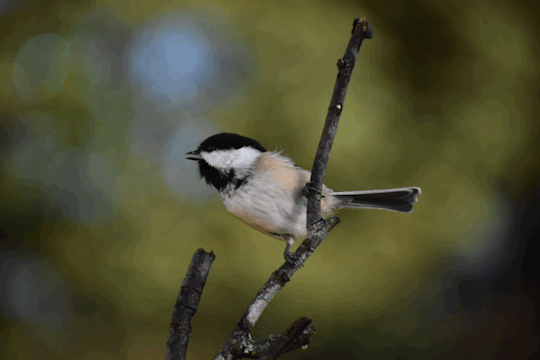
Black-capped Chickadee (Poecile atricapillus)
I gotta say, I have a real soft-spot for these guys. Although, to be fair, I think most people do! Named after their iconic call, and their memorable black cap, the Black-capped Chickadee (Poecile atricapillus) is one of the most iconic birds of New England, and arguably of North America. I say arguably only because there are a few chickadees in the United States, but the Black-capped is one of the most famous. We'll revisit the rest in two later posts, but this one is our focus today.
This bird was originally chosen because, well, it's iconic. I assume. To be honest, I don't actually know why it was chosen, outside of it being recognizable. It's also possible (POSSIBLE) that it was inspired by nearby Maine's choice of State Bird. But that's a choice we'll get to at a later date, I promise you that. As for the BCCH here, does it fit the state? I'll be honest, I actually like the chickadee for Massachusetts' State Bird. Partially, that's because it's a bird that can be found all throughout it with no difficulty, and it's an excellent beginner bird for kids (and just-starting amateurs). But, it's also small and incredibly scrappy, just like Massachusetts. I've had these guys in hand before, and I tell you, these little bastards'll hammer away at your cuticles with their beaks to get you to let them go. Doesn't hurt, unless they really try to grab on and twist at a sensitive spot, but they're fighters!

They're also quite social and vocal, which also fits residents of the Bay State. They have a unique language, with an alarm call that's recognizable by multiple bird species for warning, and it's also their most famous call ("chick-a-dee-dee-dee-dee"). The more "dees" there are, the higher the perceived threat is, fun fact. They hang out in groups in the winter, both with other chickadees and other birds, and their brains generate new neurons in the autumn and winter to remember and navigate to places where they can find food during a difficult harvesting season. That's how I feel when I have to remember where the nearest Dunks is for coffee, not gonna lie.
I realize that I'm making some convincing arguments for the incumbent here, but...yeah, there's a reason. I do honestly think this is a solid choice for the State Bird of Massachusetts, so I'll support its re-election if that occurs. But with that said and presented, let's move on to the challengers. Some are good, some are mediocre, and some are a bit surprising. And some...should maybe belong to a different state.

Piping Plover (Charadrius melodus)
eBird's suggestion is, unsurprisingly, the Piping Plover (Charadrius melodus), because a whopping 25% of the breeding population can be found in Massachusetts, according to eBird Status and Trends. And WOW, that is a massive proportion. That means, just to make this clear, one in 4 of ALL Piping Plovers are born in Massachusetts. Significant proportion, meaning that this has a claim on the role of MA State Bird for that reason alone. And Massachusetts certainly knows this, as several beaches in the state are shut down during the plover breeding season to allow them to nest in peace, without human disturbance.
In fact, when Piping Plovers were declared endangered in the Endangered Species Act, Mass Audubon launched the Coastal Waterbird Program to protect them and a later entry on this list. The population has exploded tenfold in the last 40 years of conservation work, and these are a pretty easy to find species now, if you're looking for them. This is a great introductory bird, both to conservation efforts, and to shorebirds (which are notoriously difficult to identify). It's also, surprisingly for shorebirds of this ilk, pretty easy to identify. And also...they're incredibly cute. I mean, have you seen the babies? It's crazy how cute they are. Seriously, LOOK AGAIN. Precious. Another solid candidate, and an excellent representative of the beaches of Massachusetts.

Ipswich Sparrow (Passerculus sandwichensis princeps)
Ah, the Savannah Sparrow (Passerculus sandwichensis). We meet again. Sorry to abandon you back there in Georgia, but to be fair, you were only nominated there because you're named after a major city in the state. But here...ah, wait, right, same thing. Now, to be fair, you've probably mentioned that the nominated bird is the Ipswich Sparrow (Passerculus sandwichensis princeps), not the Savannah Sparrow. But this is, of course, a subspecies of the Savannah Sparrow, named after Ipswich, Massachusetts due to its first sighting there. Larger and paler than its compatriots, the Ipswich Sparrow is known from Massachusetts...but breeds in Nova Scotia. Yeah, we've got another Connecticut Warbler (Oporornis agilis) situation here. Yikes.
So, is there a reason to nominate this bird for Massachusetts outside of its name? Well...actually kinda. These pale sparrows are, to be fair, pretty uniquely found in Massachusetts. And, while this isn't the only place you can see it, it is a reliable place to find it. It's sighted on the dunes on the Massachusetts coast, blending in with the light-colored sand, and making its way to and from Nova Scotia, where it only breeds on one island. So, conservation concern (and focus), seen in the state (even if it doesn't breed there), relies on some of its habitats of focus (saltmarshes and coastlines), has a tie to it that's unique to Massachusetts...it's something. Not as good as other options, but...something. In any case, let's move on.
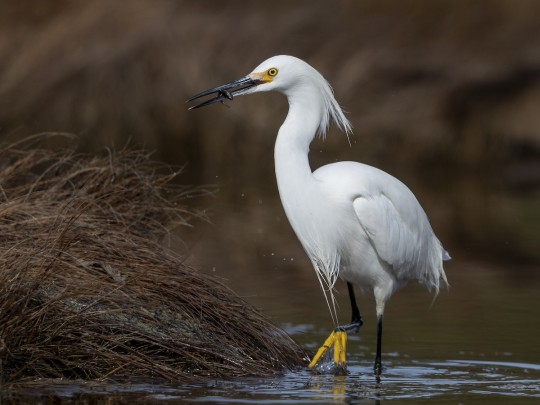
Snowy Egret (Egretta thula)
Hold on. We saw this guy in the Connecticut post! What is this post, a bunch of repeats? Well, to be fair here, the Snowy Egret (Egretta thula) is a slightly better fit for Massachusetts than it was for Connecticut...for the exact same reason it was suggested for Connecticut. Well, part of it, anyway. I stand by the idea of applying the "macaroni" label to the Snowy Egret to fit with Connecticut, but it's the Audubon Society part I'm focusing on here. Lemme quote the previous post:
To be clear here, quite a lot of birds were used in millinery back in the day, but the Snowy Egret (and the Great Egret (Ardea alba), for that matter) are special. Those long white feathery plumes were heavily prized as hat decorations, enough so that the species nearly went extinct from hunting them for the hat trade. As a result of that, people began to turn their eye towards conservation of the species, and the protection of birds in general. Two women, Harriet Hemenway and Minna B. Hall, got a group of women together to protect the birds. They rallied the troops, and their organization became fairly popular. Eventually when they sought to name it, they did so after one of the most famous ornithologists in American history at the time: John James Audubon. And from there...well, you can guess.
The Audubon Society is one of the premiere bird conservation organizations in the world, and especially in the United States, and is well-known to the public sector. And it was born right here in...Massachusetts. Oh. Wait, have I jumped the gun on this one?
I had, indeed, jumped the gun. So, to fix that now, let's throw the Snowy Egret in here instead! After all, it does breed in the state (a little bit), and I actually saw some earlier this year in Parker River NWR! It has a historical tie, and to the largest conservation organization in New England! Trust me, Mass Audubon is a MASSIVE deal up here, and their link alone gives me cause to put the Snowy Egret on this list. That said, though...that's not their logo.
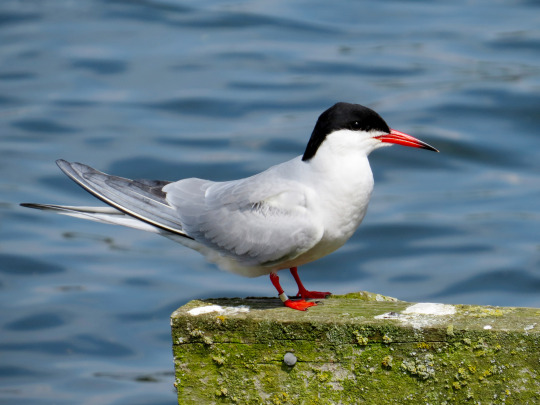
Common Tern (Sterna hirundo)
To my genuine surprise, the logo for Mass Audubon is actually the Common Tern (Sterna hirundo), an aerial and acrobatic seabird found on the shores of Massachusetts, in some surprising places. In Massachusetts, though, there's a major tie to conservation and the Common Tern, because this is actually one of the birds whose feathers were stolen for hats, inspiring the foundation of the movement. Yeah, both the Snowy Egret and this species, which was (and is) more common here. So, if there's an Audubon-related bird to be elected, it probably should be this one, to be honest. This is a species, understand, that was crashing in population in the late 1800s, and was saved from hunting by a young Mass Audubon. Between 1889 and 1920, the population bloomed eightfold, from 5,000 pairs to 40,000 pairs. An impressive population boom in every possible way. However, that wouldn't last.
Herring Gulls (Larus argentatus), human activity, and various other disturbances have created numerous population crashes and bottlenecks in the species' history in Massachusetts, keeping them a conservation focus to this day. The species has notably spread throughout the state's coastlines to this day, and they aren't terribly hard to find. In fact, you can see them in the Boston Harbor, from the shore! I've seen Common Tern from the New England Aquarium very often, in fact, and it's sort of magical to see them smack-dab in the middle of the city. Their habitats of beaches and shorelines need to be maintained and protected, so throwing the conservation focus on them is incredibly valuable for the species' future. A solid choice for State Bird (or another category sponsored by the SBI), if ever there was one.

Veery (Catharus fuscescens)
But wait, coming in at the last moment, just making it, the Veery (Catharus fuscescens)! Yeah, this one's a bit of a surprise, but I found out some very interesting info recently. The Black-capped Chickadee (Poecile atricapilla) was not the first nominee for State Bird; instead, in 1931, the State Federation of Women's Clubs (yup, another woman's organization) nominated the Veery for the State Bird...and got shot down. It took them ten years to nominate the Chickadee for unknown reasons, meaning the Veery probably didn't even get its day in court. Shameful! So, let's try and rectify that here, shall we?
Veery are thrushes, famous for the beautiful, ethereal calls that give them their name. This is a robin-sized migratory songbird that breeds in the forests of New England and southern Canada, and are an iconic New England bird in their own right. They're found in forested wetlands (that's two habitats of concern in MA), usually fairly close to beaver ponds, and the two species are often associated. It's also a species mentioned in Henry David Thoreau's Walden, one of the most important environmentalist literary works in American history, as well as an important Massachusetts story. It's also currently spreading in the state, increasing the size of its range, while also experiencing slightly decreasing populations, meaning that focus is still needed. And again...that song. It's a delight to hear it in forests, and recognizing it is a great step for beginning birders to pay more attention to the sound around them.

And with that...yeah! We'll end it there! Only six nominees, and you're probably wondering what's happened to the State Raptor and State Game Bird. Well...I'll explain that once we get to the results. Because that's a bit more complicated then expected.
See you next time, and happy birding!
Introduction to the State Birds Initiative
1. Delaware - Poll | Results 2. Pennsylvania - Poll | Results 3. New Jersey - Poll | Results 4. Georgia - Poll | Results 5. Connecticut - Poll | Results 6. Massachusetts - Poll | Results
#bird#birds#birding#birder#birders#birdwatching#black birder#state bird#state bird initiative#state birds initiative#birdblr#birblr#poll#tumblr poll#birds of tumblr#black-capped chickadee#piping plover#snowy egret#ipswich sparrow#common tern#veery#chickadee#plover#egret#sparrow#tern#thrush#massachusetts#birdposting
62 notes
·
View notes
Text

Marriage of Heaven, Hell &Humanity
Author: draechaeli
Artist: seidenapfel
Rating: Explicit
Pairings: Castiel/Dean Winchester, Kaia Nieves/Claire Novak, Charlie Bradbury/Gilda, Garth Fitzgerald IV/Bess Myers, Pre-Eileen Leahy/Sam Winchester, pre-Donna Hanscum/Jody Mills
Length: 139514
Warnings: N/A
Tags: Alternate Universe - Canon Divergence, Canon-Typical Violence, Demon Dean Winchester, BAMF Castiel, Possessive Sex, Public Sex, John Winchester’s A+ parenting, Crowley Ships it, Found Family, Dean Cooks
Summary: Castiel isn’t hacking up a lung when Sam calls him to say that Demon!Dean is in Amherst Junction, Wisconsin, so he reaches Dean in Beulah, North Dakota before Sam. Dean’s a bit surprised to see Cas in the bar because as a demon he could sense Castiel, Angel of the Lord, some distance away. After all, they have a profound bond...and, as a demon, Dean’s finally not afraid to admit it. And perhaps that's ultimately all they need to bring together Heaven, Hell, and humanity, as long as they can get Sam on board.
Link to Fic | Link to Art
65 notes
·
View notes
Text

[ID: Photo of a group of protesters overlaid with text reading: "Shame on UBuff and SUNY. At 8:22, 5 minutes after maghreb prayer began, [University of Buffalo] UPD violently stormed the newly liberated zone, arresting 10+ students, brutalizing at least 1, and injuring several others. Bail fund venmo: @ hoch-hub4pal". End ID]
from ubydsa on Instagram
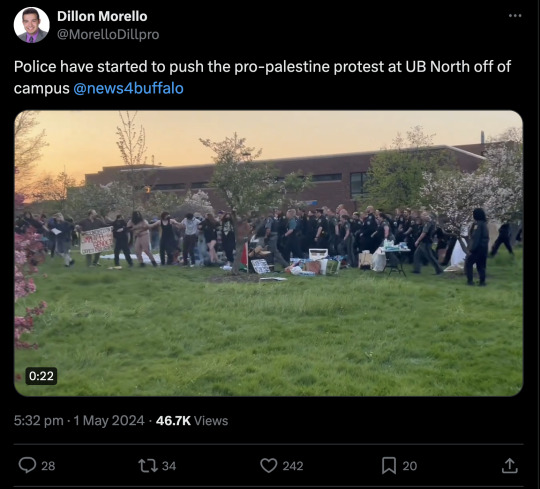
[ID: Tweet by Dillon Morello (@MorelloDillpro) reading "Police have started to push the pro-palestine protest at UB North off of campus @.news4buffalo". It includes a 22-second video of uniformed police officers charging and dispersing protesters across a large lawn. End ID]
100 notes
·
View notes
Text

Did you know the Vanderbilt and Cecil families owned Ashville?
The Vanderbilt family, specifically the descendants of George Washington Vanderbilt II, have a long-standing connection to Asheville, North Carolina. George Vanderbilt built the Biltmore Estate, a 250-room chateau-style mansion, in the late 1800s. The estate, located in Asheville, was his summer home and a testament to his love for the city and its natural beauty.
The Cecil Family's Involvement
The Vanderbilt family's connection to Asheville continued through the generations. In 1924, George Vanderbilt's daughter, Cornelia Stuyvesant Vanderbilt, married John Francis Amherst Cecil, and the couple had two children. Their son, William Amherst Vanderbilt Cecil Jr., is the current president and CEO of The Biltmore Company, which owns and operates the Biltmore Estate.
The Company's Evolution
In 1999, The Biltmore Company formed a new business group, which expanded the estate's operations beyond tourism and hospitality. Today, the company is a privately held corporation, still owned by the Cecil family, and employs over 2,400 people in Western North Carolina.
Asheville's Economic Impact
The Biltmore Estate and its affiliated businesses have a significant economic impact on Asheville and the surrounding region. The estate attracts millions of visitors each year, generating revenue for local businesses, hotels, and restaurants. The company's agricultural and forestry operations also contribute to the local economy.
In Summary
While the DuPont family is not directly involved in owning Asheville, NC, the Vanderbilt family, specifically the Cecil family, has a long and storied connection to the city through the Biltmore Estate. The estate's ownership and operations remain in the hands of the Cecil family, who continue to preserve and promote Asheville's natural beauty and cultural heritage.
🔗
🔗
🔗
Wait there's more 👇
DuPont State Forest, made famous as the setting for the movies The Hunger Games and The Last of the Mohicans, is home to amazing waterfalls, mountain lakes and hiking trails. DuPont State Forest is located in Western North Carolina near the South Carolina state line, and is less than an hour drive (40 miles) south of Asheville.
Curious has anyone looked at NC governor Roy cooper's political investments from the Vanderbilt family? Cecil family? Or Dupont family? He's working in the heart of their investments...
Interesting this article coming up with the lieutenant gov is criticizing his efforts with the after math of hurricane Helene...
Read 🤔
NOTHING will be left unknown, EVERYTHING will be revealed and NOTHING will be hidden and remain a secret. 🤔
#pay attention#educate yourselves#educate yourself#knowledge is power#reeducate yourselves#reeducate yourself#think about it#think for yourselves#think for yourself#do your homework#do some research#do your own research#do your research#ask yourself questions#question everything#evil lives here#news#truth be told#hidden history#history lesson#history
44 notes
·
View notes
Text
College Shitlist (boycott these colleges)
This is the updating list of colleges where pro-palestine protests are present that have brutalized/arrested/punished their students for protesting the ongoing palestinian genocide.
REMEMBER: DO NOT GIVE YOUR MONEY TO THESE COLLEGES. PROTESTS ON THESE CAMPUSES ARE IMPORTANT, BUT KEEPING YOUR INTELLIGENCE AND MONEY AWAY FROM THESE ABHORRENT INSTITUTIONS DIMINISHES THEIR POWER. THEIR ONLY POWER COMES FROM THEIR STUDENTS AND THEIR MONEY. YOU HAVE THE POWER TO TAKE THEIR PRESTIGE AWAY.
In No Particular Order:
Princeton University
Massachusetts Institute of Technology
University of California - Berkeley
Stanford University
Virginia Tech
University of Michigan - Ann Arbor
University of Washington
University of Minnesota - Twin Cities
University of Wisconsin - Madison
Harvard University
Yale University
University of California - Los Angeles
Cornell University
University of Pittsburgh
University of Chicago
University of Southern California
University of California - San Diego
Tufts University
Northeastern University
Stony Brook University
University of Connecticut
University of California - Merced
University of Massachusetts - Amherst
University of Iowa
University of Arizona
Arizona State University
University of California - Irvine
George Washington University
DePaul University
University of Pennsylvania
Pomona College
University of Texas - Dallas
The New School
University of Houston
University of Rochester
University of New Mexico
Duke University
New York University
University of North Carolina - Chapel Hill
Barnards College
University of Vanderbilt
Rutgers University - New Brunswick
Columbia University
Portland State University
University of Oregon
California Polytechnic Institute Humboldt
California Polytechnic University - San Luis Obispo
Northern Arizona University
University of Utah
University of Kansas
University of Illinois - Urbana Champaign
Washington University
New Mexico State University
University of Texas - Austin
Tulane University
University of South Florida
University of North Florida
University of Florida
Emory University
University of Georgia
Mercer University
Notre Dame University
Case Western Reserve University
The Ohio State University
Virginian Commonwealth University
University of Virginia
University of Buffalo
State University of New York - Purchase
State University of New York - New Paltz
Brown University
Brandeis University
Dartmouth College
University of New Hampshire
Emerson College
CUNY City College of New York
International List:
University of Amsterdam
University of Alberta
University of Queensland
University of Sydney
University of Melbourne
Australian National University
University of New South Wales
University of Calgary
University of Oxford
Feel free to share this list, send me additional colleges to add (WITH SOURCES), and/or request more information on a particular college
#palestine#gaza#free palestine#boycott israel#free gaza#princeton#yale#harvard#cornell#brown#dartmouth#mit#nyu#gaza genocide#notre dame#stanford#boycott#divest from israel#Oxford#Amsterdam#sydney#Palestine protests
48 notes
·
View notes
Text
The Buffalo subway is looking into an expansion into Amhearst and the University of Buffalo's North Campus
68 notes
·
View notes
Photo
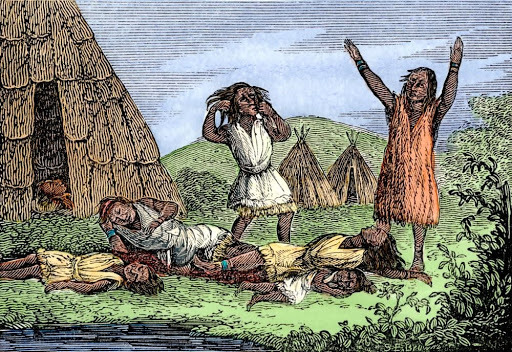
On this day, 8 July 1763, General Jeffery Amherst, commander of British forces in North America, wrote to one of his colonels asking: "Could it not be contrived to send the small pox among the disaffected tribes of Indians? We must on this occasion use every stratagem in our power to reduce them." The following week he wrote that his subordinate should "try every other method that can serve to extirpate this execrable race." Amherst was reeling from the loss of three forts to Native American fighters in the conflict know as Pontiac's war. Unbeknownst to him, blankets tainted with smallpox had already been given to Indigenous leaders by British forces. A smallpox epidemic subsequently broke out which devastated tribes in the Great Lakes and Ohio Valley regions over the coming months, although a direct causal link with the blankets cannot be established. The Massachusetts town, Amherst, and its college and university, are still named after the genocidal official. Learn more about Indigenous genocide and resistance in this book: https://shop.workingclasshistory.com/collections/books/products/500-years-of-indigenous-resistance-gord-hill Pictured: a painting of Native American smallpox victims https://www.facebook.com/photo.php?fbid=658443989662153&set=a.602588028581083&type=3
203 notes
·
View notes
Text
honestly if I got a goddamn virtual job I could stay in NOLA for cheaper than moving up north. I was looking at Northampton and Amherst to be with family and like. The rental prices there could get me a place in the French quarter. Not that I’d splurge on that
14 notes
·
View notes
Text


#roadsideassistance#towing#lockout#towtruck#towing24/7#tirechange#felicianotowing#batteryjump#westlake#elyria#amherst#north east ohio#northridge#avon#Avon lake
0 notes
Text



Virginia Ctenucha Moth (Ctenucha Virginica)
This species of moth is native to eastern North America from Newfoundland down to Virginia, but has expanded west in the past 60 years and is now found in all Canadian provinces.
This species is identified by its black wings juxtaposed by a bright orange head, feathery antennae, and a metallic blue body that makes it particularly eye catching when it flies. The caterpillar form feeds on grasses, sedges, and other plants while the adult feeds on nectar from flowers like goldenrod.
Somehow I went my whole life without ever seeing this species but during my recent trip to the Maritimes I came across multiple of this moth. This one was found in a field in Amherst, Nova Scotia.
12 notes
·
View notes
Text
"The most notorious internee held in any of the Canadian [internment] camps was Leon Trotsky. When news reached North America in March 1917 that the Russian tsar, Nicholas II, had abdicated, Trotsky was living in exile in New York City. He immediately arranged to return to his homeland. On March 27 he boarded the Norwegian freighter Christianiafjord with his wife and two sons, bound for Petrograd. Trotsky had been under surveillance in New York where British authorities took note of his departure. The situation in Russia was confused, but the Allies knew that socialists like Trotsky wanted to withdraw Russian troops from the war. It was widely believed that they were enemy agents funded by the Germans to divide the Allied war effort. At Halifax, the British naval commander received orders to board the Christianiafjord when it arrived and to detain Trotsky and the other Russians with whom he was travelling.
On April 1 the freighter steamed into Halifax harbour. Naval officers marched Trotsky and his comrades to jail cells in the Citadel, the imposing stone fortification overlooking the city. Then, while Natalia Sedova Trotskaya and the boys were lodged with a police employee in town, the men were interned in a prisoner-of-war camp, a converted iron foundry at Amherst near the New Brunswick border.
Trotsky was not cowed by his treatment. Quite the opposite: he defiantly petitioned the Russian government and the British prime minister, protesting his illegal detention. Meanwhile, he began to harangue his fellow prisoners with speeches, in fluent German, proclaiming the need for a revolution in Germany. “That month the concentration camp very much resembled a perpetual mass meeting,” he later wrote. To the dismay of officials, he became a hero to the 800 other detainees. He was “by far the most popular man in the whole camp,” the commander reported. Another officer recalled that Trotsky “gave us a lot of trouble at the camp, and if he had stayed there any longer [...] would have made communists of all the German prisoners.”
Trotsky was a citizen of a country with which Great Britain, and therefore Canada, was an ally in the fighting, and he was travelling with perfectly legal permits and visas. His internment was giving Canada a black eye internationally. At rallies in New York and Russia, speakers denounced Canada as a tyranny, no better than the Tsarist autocracy. Finally, after a month in confinement, he won his release. A crowd of cheering prisoners lined his path as he walked to the gate, followed by an impromptu camp band doing its best to play the Internationale. And with that, Leon Trotsky’s sojourn in Canada ended."
- Daniel Francis, Seeing Reds: the Red Scare of 1918-1919, Canada’s First War on Terror. Arsenal Pulp Press, 2011. p. 17-18.
#world war 1 canada#world war 1#russian revolution#halifax#leon trotsky#internment camps#prisoner of war camp#iron heel#canada in the british empire#political prisoners#canadian history#seeing reds#reading 2024#research quote#anti-communism#communists
15 notes
·
View notes
Text
Jan - Jun 2023 Reading List:
Adichie, Chimamanda Ngozi. Dear Ijeawele, or, A Feminist Manifesto in Fifteen Suggestions. New York: Alfred A. Knopf, 2017.
Adichie, Chimamanda Ngozi. We Should All Be Feminists. New York: Vintage Books, 2014.
Bartky, Sandra Lee. Femininity and Domination: Studies in the Phenomenology of Oppression. New York: Routledge, 1990.
Bittel, Carla. Mary Putnam Jacobi & The Politics of Medicine in Nineteenth-Century America. Chapel Hill: The University of North Carolina Press, 2009.
Bolen, Jean Shinoda. Goddesses in Everywoman: A New Psychology of Women. Perennial Library, n.d.
Brownmiller, Susan. Femininity. New York: Open Road Media, 2013.
Chesler, Phyllis. Women and Madness. Chicago: Lawrence Hill Books, 2018.
Christ, Carol P., and Judith Plaskow. Womanspirit Rising: A Feminist Reader in Religion. San Francisco: Harper & Row, 1979.
Daly, Mary. The Church and the Second Sex. New York: Harper Colophon Books, 1975.
Davis, Elizabeth Gould. The First Sex. New York: G. P. Putnam’s Sons, 1971.
Doyle, Sady. Dead Blondes and Bad Mothers. Brooklyn: Melville House Publishing, 2019.
Dworkin, Andrea. Intercourse. New York: Basic Books, 2007.
Ehrenreich, Barbara, and Deirdre English. For Her Own Good: 150 Years of the Experts’ Advice to Women. Garden City, NY: Anchor Press, 1978.
Firestone, Shulamith. The Dialectic of Sex: The Case for Feminist Revolution. New York: William Morrow and Company, Inc., 1970.
Gowrinathan, Nimmi. Radicalizing Her: Why Women Choose Violence. Boston: Beacon Press, 2021.
Hawthorne, Susan. In Defence of Separatism. Mission Beach: Spinifex Press, 2019.
Jeffreys, Sheila. Anticlimax: A Feminist Perspective on the Sexual Revolution. Spinifex Press, 1990.
Jeffreys, Sheila. The Spinster and Her Enemies. Chicago: Spinifex Press, 1997.
Johnson, Sonia. Going Out of Our Minds: The Metaphysics of Liberation. Freedom: Crossing Press, 1987.
Johnson, Sonia. Wildfire Igniting the She/volution. Albuquerque: Wildfire Books, 1989.
Lerner, Gerda. The Creation of Patriarchy. New York: Oxford University Press, 1986.
Love Your Enemy? The Debate between Heterosexual Feminism and Political Lesbianism. London: Onlywomen Press, Ltd., 1981.
Miles, Rosalind. Who Cooked the Last Supper?: The Women's History of the World. New York: Three Rivers Press, 2001.
Reed, Evelyn. Woman’s Evolution: From Matriarchal Clan to Patriarchal Family. New York: Pathfinder Press, 1975.
Sjöö, Monica, and Barbara Mor. The Great Cosmic Mother: Rediscovering The Religion of the Earth. San Francisco: HarperSanFrancisco, 2013.
Smith, Joan. Home Grown: How Domestic Violence Turns Men Into Terrorists. London: Riverrun, 2019.
Solanas, Valerie. SCUM Manifesto: With an Introduction by Vivian Gornick. London: Olympia Press, 1971.
Spender, Dale. Women of Ideas and What Men Have Done to Them. London: Ark Paperbacks, 1983.
Srinivasan, Amia. The Right to Sex: Feminism in the Twenty-First Century. New York: Farrar, Straus and Giroux, 2021.
Stone, Merlin. When God Was a Woman. San Diego: Harcourt Brace Jovanovich, 1978.
Ussher, Jane. Women’s Madness: Misogyny or Mental Illness? Amherst: University of Massachusetts Press, 1992.
West, Lindy. The Witches are Coming. New York: Hachette Books, 2019.
79 notes
·
View notes